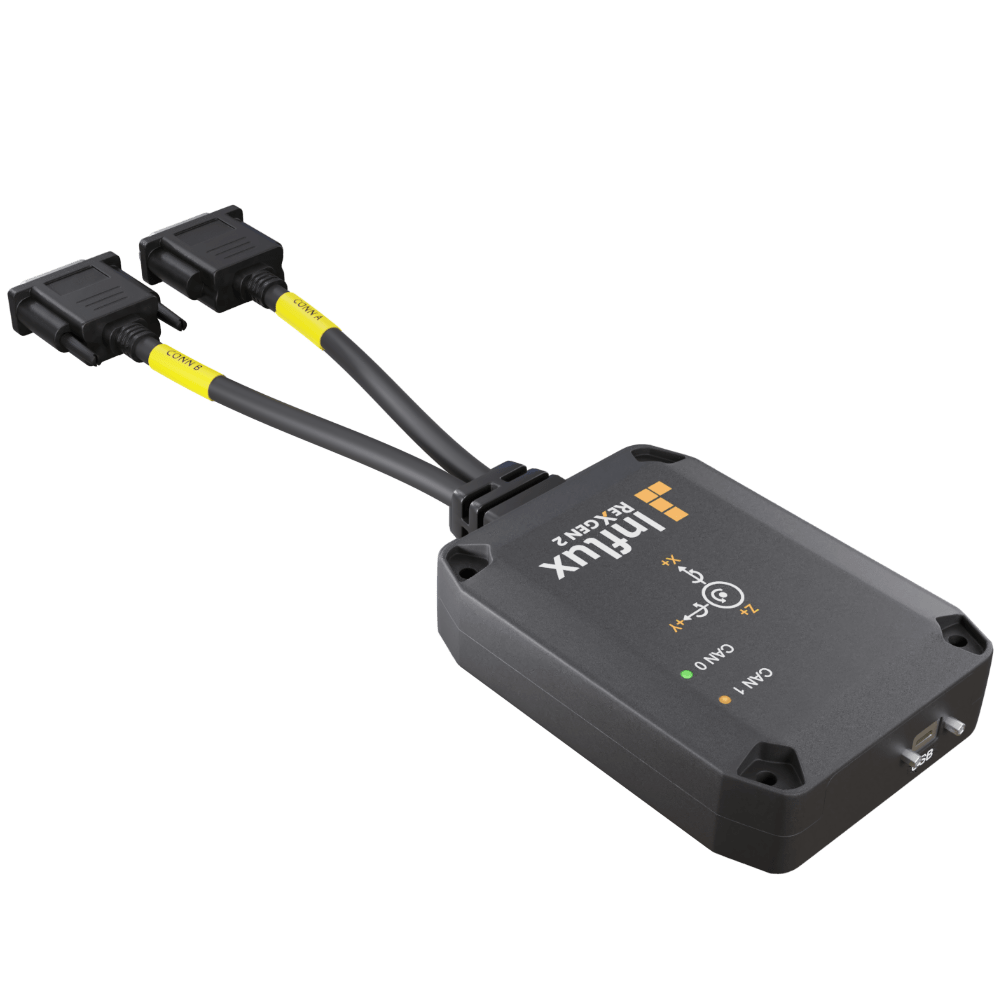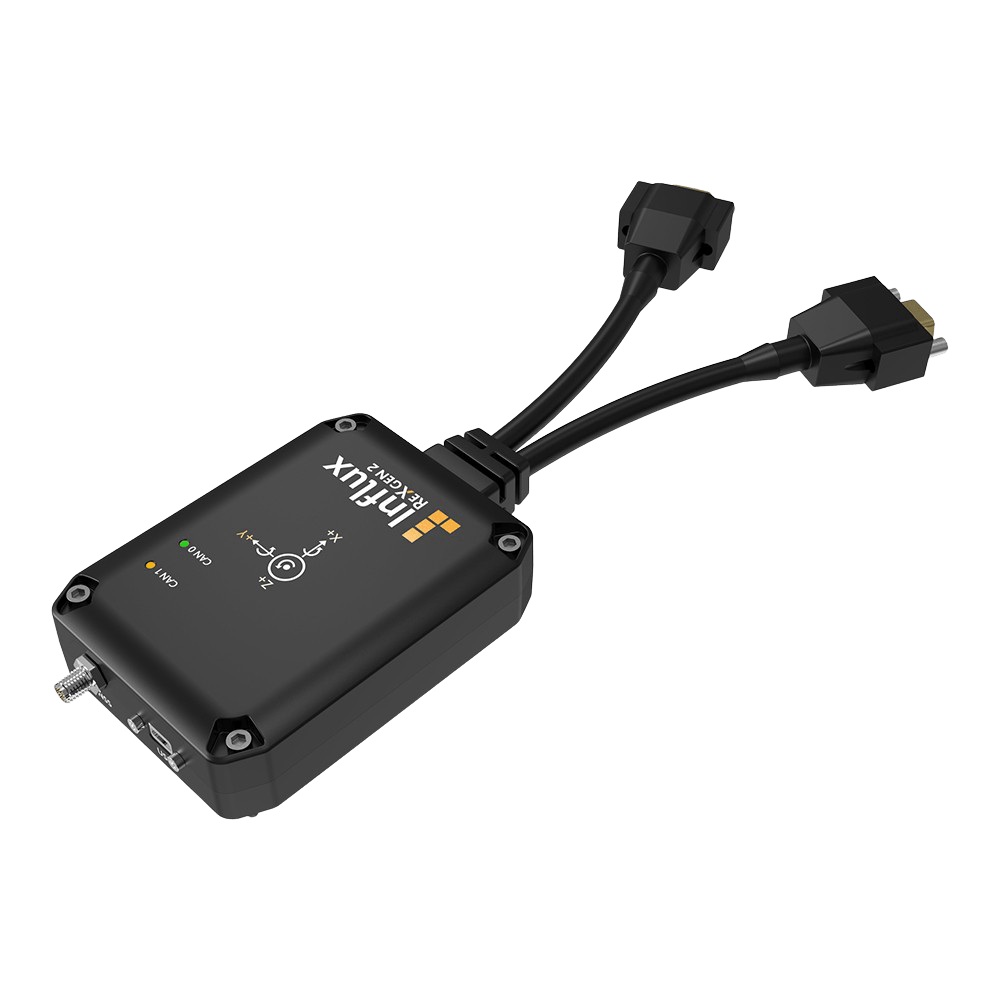



Key Features
Overview
The Influx Technology ReXgen 2 is a compact dual-channel CAN/CAN FD and single-channel LIN data logger with 2 analogue and 2 digital inputs, designed for robust in-vehicle data capture and post-analysis across development, validation, and fleet tasks.
It combines embedded eMMC storage (8/16/32 GB options) with low-power sleep modes, WakeOnCAN, IP65 enclosure, and micro-USB 2.0 PC connectivity, enabling reliable unattended logging with simple bench or vehicle integration.
Configuration and export are handled via ReXdesk, supporting DBC-based triggers and industry formats including ASAM MDF4, CSV, MATLAB, ASC, and BLF for streamlined downstream analysis and toolchain compatibility.
For cellular telemetry and integrated GNSS/IMU, consider the ReXgen Air, which extends the platform with LTE options and 6-axis motion sensing for remote monitoring and location/motion capture in the same ecosystem (Debug Store: ReXgen Air).
ReXgen 2 offers J2534 pass-thru support, configurable triggers (ID/parameter/DM1), and a rugged, stackable design, providing a balanced mix of capability, simplicity, and format interoperability for modern CAN FD/LIN logging workflows (Debug Store: ReXgen 2).
Downloads
Why Engineers Choose The Influx Technology ReXgen 2 CAN/LIN Bus Data Logger
Robust In‑Vehicle Logging
Fast Setup, Easy Exports
Versatile Workflows
Frequently Asked Questions
Have a Question?
-
Are there Debug Store alternatives within the same ecosystem?
See the ReXgen Airfor GNSS/IMU and cellular telemetry at The Debug Store:
-
How does it compare to Vector GL series for automotive testing?
Vector GL2000 offers more channels and an extensive suite, whereas ReXgen 2 covers core dual CAN FD/LIN needs in a smaller, simpler package.
-
How does ReXgen 2 differ from high‑end loggers like Intrepid neoVI FIRE 2?
neoVI FIRE 2 adds many more channels and Ethernet for complex setups, while ReXgen 2 focuses on compact CAN FD/LIN logging with eMMC and simple DBC workflows.
-
How durable is the hardware in vehicles?
ReXgen 2 has an IP65 enclosure and ±58 V bus fault protection for transceivers to withstand harsh environments and faults.
-
Is there an option with GNSS and IMU?
The ReXgen family includes variants with GNSS/IMU; for cellular and integrated GNSS/IMU, see ReXgen Airat The Debug Store
-
Can it correlate bus data with physical sensors?
Yes, two analogue (±10 V) and two digital inputs allow logging of sensor voltages and discrete states alongside CAN/LIN frames.
-
Does ReXgen 2 support diagnostics and reprogramming?
Yes, it supports J2534 pass‑thru over USB, allowing compatible diagnostic and reflashing tools to connect via the logger.
-
How is the device configured and how are signals exported?
Use ReXdesk to configure with DBC files and export to MDF4, CSV, MATLAB, ASC, and BLF to fit existing analysis workflows.
-
What networks does ReXgen 2 support?
ReXgen 2 logs two CAN/CAN FD channels and one LIN bus concurrently for comprehensive in‑vehicle capture in modern architectures.




